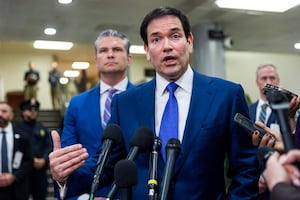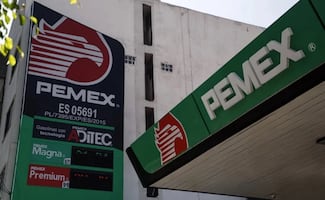Más Información

Venezuela negocia con EU venta de volúmenes de petróleo; es "en el marco de las relaciones comerciales", afirma

EU pone a Diosdado Cabello al nivel de Bin Laden; esta es la millonaria recompensa que ofrecen por él

VIDEO: Desarticulan en Europa red de tráfico de metanfetamina ligada al Cártel de Sinaloa; era introducida en mármol importado de México

Sheinbaum aborda con cónsules y embajadores situación en Venezuela y EU; revisan planes para 2026 y “momento histórico”
According to the steel producers association (CANACERO) , Mexico ’s steel industry faces a dire situation: The 25% tariffs imposed to its products by the United States have not yet been lifted while American steel imports are at an increase, despite Mexico’s retaliation tariffs.
CANACERO welcomed the new trade pact, called the United States-Mexico-Canada Agreement (USMCA) , but said it viewed “with concern” the ongoing steel dispute and the “serious situation” it created for the industry.
U.S. President Donald Trump
said on Tuesday that U.S. steel and aluminum tariffs would remain in place for Canada and Mexico until they “can do something different like quotas, perhaps.”

Photo: Evan Vucci
In a statement, CANACERO said it supported efforts to find a solution to the impasse before the leaders of Mexico, the United States and Canada signed USMCA , which officials say could happen at a G20 summit at the end of November .
If no solution can be found, Mexico should put tariffs on U.S. steel to level the playing field, CANACERO said.
From May to August 2018 , steel imports from the United States grouped within the 50 fractions to which the Mexican government applied tariffs increased by 18% , which contrasts with the 30% drop of Mexico’s export to the North American Country .
Through a press release, the chamber stated that the situation was troubling since, despite a consensus was reached to sign the new trilateral agreement, “the serious situation that the industrial sector faces still persists, caused by the 25% tariffs imposed by the Americans under Section 232 ,” which is why the agency suggested to draft a contingency plan in case the tariff was not removed.
CANACERO informed of a drop in steel production and exports from Mexico to the U.S. due to “ an artificial measure that is frankly inconsistent with the principles of free trade and sets a dangerous precedent that infringes its guidelines .”
However, the U.S. government has not yet offered a solution to the problem. Since June 1, 2018 , the United States applied a tariff of 25% on Mexico, Canada, and Europe’s steel imports . As a retaliatory measure, Mexico taxed several products, including 50 tariff fractions that encompassed steel products, food, and consumer goods.
Five weeks ago, the steel industry received a proposal suggesting that steel trade with the U.S. could be regulated based on export quotas, thus ending the 25% tariffs, but no agreement has been reached between both nations so far.
The Mexican government promised that, once the trilateral deal of North America was closed, the country would enter a process to terminate the 25% tariff known as Section 232.
dm
Noticias según tus intereses
[Publicidad]
[Publicidad]











